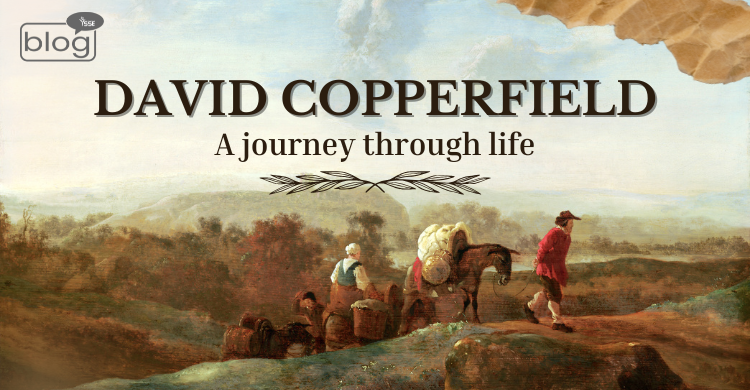“Davy Copperfield” is one of the great novels by Charles Dickens and one of his most autobiographical novels by popular belief. The novel follows the life of its namesake hero, David Copperfield, from childhood to maturity, the problems he faces, how he evolves as a human being, and the various characters who shape his future.
The book starts in David’s early years beneath the shadows of tragedy. David’s father died when he was still in his mother’s womb, and thus, he and his mother, Clara, are left vulnerable at this moment. Childhood is first fostered in care and love by his mother and his warm-hearted nurse, Peggotty. But this peace of mind is short-lived as his mother weds Edward Murdstone, a cold, grim, and oppressive man who introduces misery into their lives. Murdstone, whose sister is no less cruel to David, sends him to the dismal boarding school of Salem House, where more miseries are inflicted.
He then encounters James Steerforth, a handsome but morally deficient man, and Tommy Traddles, who is very kind and a good friend. These will stand him in good stead for the rest of his life and shape his experience and opinion. More tragedy befalls, however, and David’s mother dies in the end, leaving him at the mercy of the Murdstones. No one to save him; he is condemned to work in some grimy London warehouse, in poverty and being exploited. That was the worst thing that happened to him, but it toughened him and also made him stubborn.
No longer able to bear it, David embarks upon a perilous journey to seek shelter with his idiosyncratic and affectionate aunt, Betsey Trotwood. On arriving at the new home, it was once again a beginning of life for the young boy. She rescues him from the Murdstones and provides him with a new beginning by getting him into a good school run by the honest and upright Mr. Wickfield. There, he befriends Agnes Wickfield, who becomes his best friend and a moral compass star in his life.
David matures and becomes a young man, going through friendships, love, and career aspirations. He becomes a lawyer, then starts a career as a writer—a course very similar indeed to that of Dickens himself. He encounters on the way numerous characters who will long be recalled; among them, Uriah Heep, the oily one who plotted to gain any possible advantage over Mr. Wickfield, and the eternally optimistic Mr. Micawber, eternally in financial difficulties, adding humor and depth to the novel.
There is considerable romance in David’s life. He was strongly drawn to handsome, innocent, beautiful Dora Spenlow and married her despite their very different natures. Their marriage became a bundle of problems as the lady lacked any practical ability to conduct household affairs; her early death devastated the husband but helped to introduce him to contemplation. With the passage of time, he finds himself conscious of his deep, abiding love for Agnes, who has been a strengthening influence in his life. They wed later—a testament to David’s emotional maturity and ultimate happiness.
Apart from personal turmoil, David Copperfield also deals with social injustice, class inequality, and the starvation of the poor underclass. Dickens exposes child labor, the merciless education system, and the exploitation of the weak by the powerful in David’s life. The emotional penetration, coupled with the realistic characters, makes the novel one of the most enduring English novels.
At last, David Copperfield’s survival tale is a tale of growth and realization—from an orphan child and poorly treated to a successful man and a great writer—thus falling squarely into readers’ hearts as a classic tale of bad times, love, and goodness.
To read more blogs like this, click here
Writer
Fazlul Karim
Intern, Content Writing Department
YSSE

